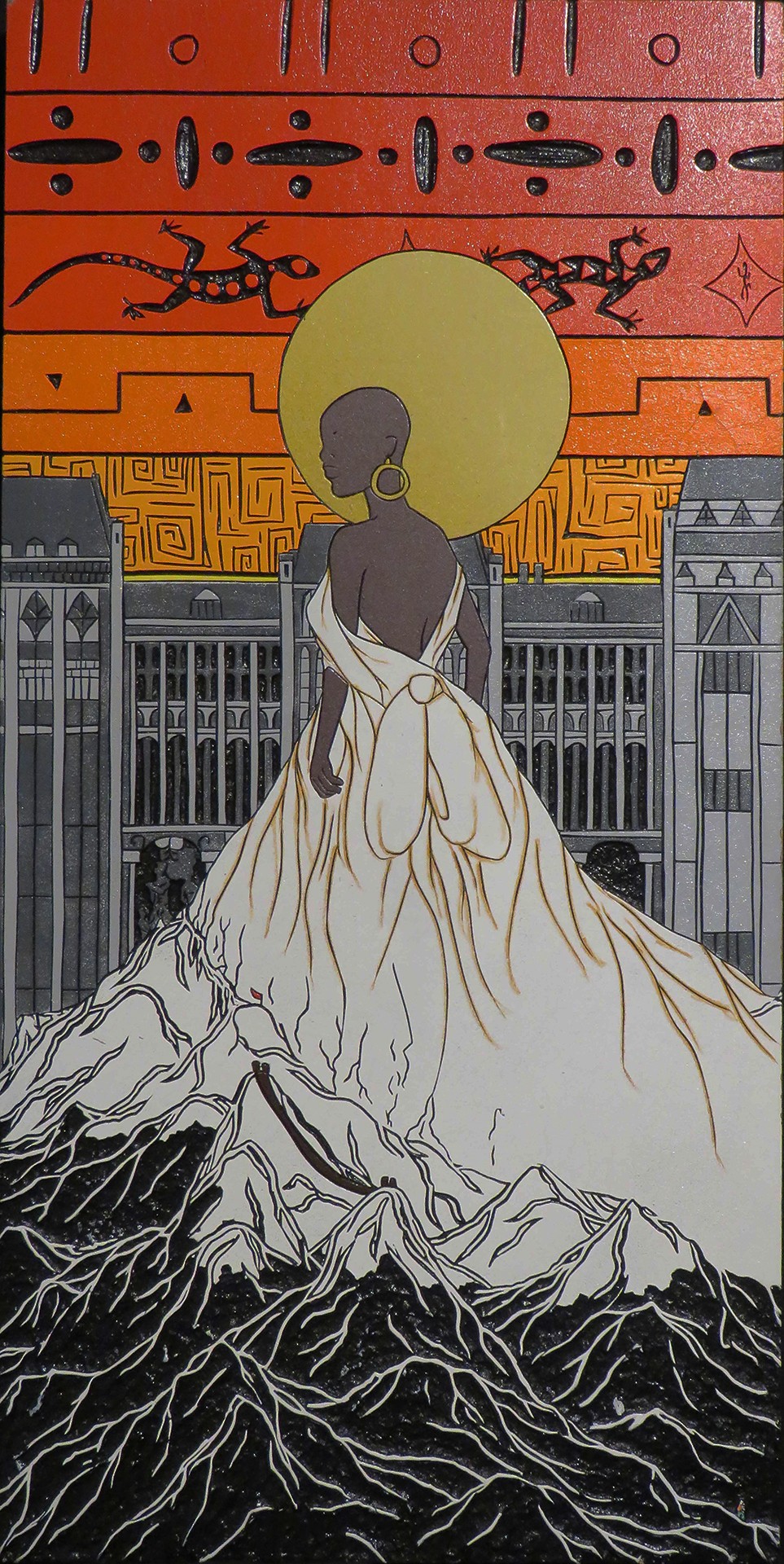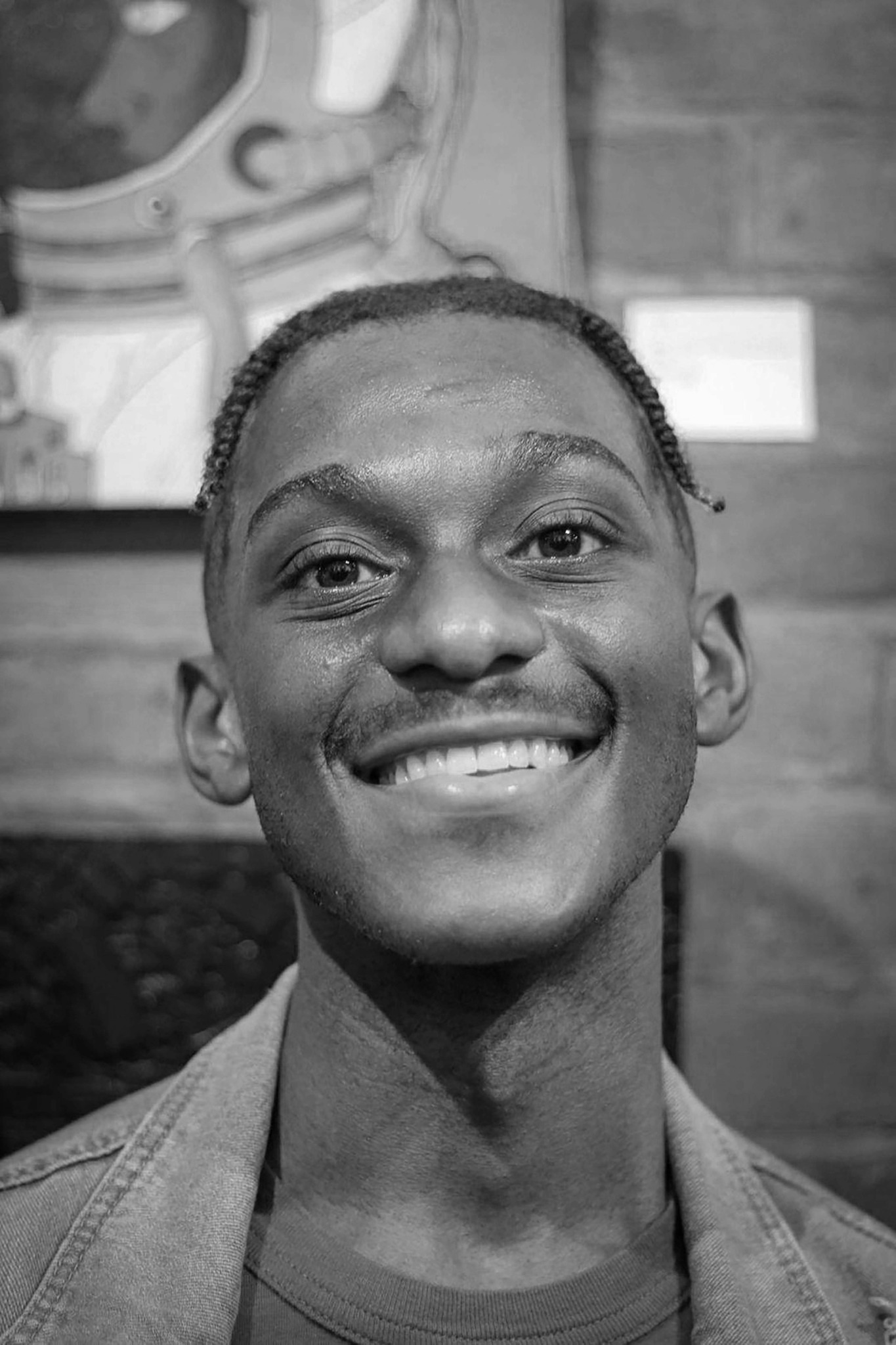Today we’d like to introduce you to TEDF.
Hi TEDF, it’s an honor to have you on the platform. Thanks for taking the time to share your story with us – to start maybe you can share some of your backstory with our readers?
I was knowingly exposed to printmaking at the age of 13 during my high school years in Jamaica. Initially, I wanted to specialize in painting and mixed media and graphic design; my teacher at the time told me how awful I was at graphic design and had urged me to pursue printmaking. My teacher was right of course but I was too hard headed to listen. I hated the tedium of the process, the thinking backwards of it all felt needlessly complicated. I did not like the look of the lino tool either, It’s snub-nosed screw on top and bulbous handle filled with small blades struck a persona more akin to that of a maraca or baby rattle than that of a tool befitting an artiste. At first glance it did not carry the seriousness associated the paintbrush, hammer and chisel or even a pencil.
Eventually I let good sense prevail and substituted graphic design with printmaking. The first relief print I had done was not made using linoleum, it was carved in a piece of shoe rubber. It was an anatomically accurate (to my skill level at the time) pair of lungs, one being gripped by a skeleton hand. My theme was anatomy and I was hellbent on expressing every angsty gore filled teenage thought I had. I didn’t realize at the time I had started my journey with printmaking but I was smitten.
Upon migrating to the United States, I didn’t have the appropriate academic structure to pursue printmaking in a controlled environment, however I always found space to work on my own. When it came time for college I never saw an art career as possible, so I never sought to pursue a formal artistic education on a collegiate level.
I am now living in the Bronx, New York. Having practiced printmaking for ten years, I have developed an unorthodox method of implementing its key tenets; carving but not printing. Enamored with the permanence felt through the weight and volume of a mounted linoleum block, I consider it the final artwork. It provides a more tangible sense of confidence
as the block communicates an assurance with every cut, scrape, or break.
I am predominantly inspired by musicians and athletes. Moments of spontaneity in the development of sonic rapture and the unpredictable nature of sport capture my attention. I employ this spontaneity in my artistic process by using creative energy to execute each piece directly, forgoing a sketch/proof of concept stage. I find the initial excitement felt at the inception of an idea wasted on any structured plan. I start with an idea and further develop themes and motifs as I go, it’s far more fun this way.
This method allows me to ignore the inherent pretentious nature in any artistic process. I want viewers to be able to engage with my work on a purely superficial level and still leave room for deeper analysis. It should be pretty and/or entertaining before it has anything to say. What’s the point of talking if you’re too repulsive for anyone to listen.
Alright, so let’s dig a little deeper into the story – has it been an easy path overall and if not, what were the challenges you’ve had to overcome?
My greatest obstacles in my artistic journey thus far is the lack of structure I had when initially developing my style. Upon migrating to the United States from Jamaica, I was thrust into a new environment absent much familiarity. As a result I found it very difficult to find mentors. Though it allowed me organically develop my style of artistic expression in a purely authentic way, I found it much more difficult to create a structured method of development. This made it more difficult to make connections with those already active in the space.
As you know, we’re big fans of you and your work. For our readers who might not be as familiar what can you tell them about what you do?
I am a printmaking artist working predominantly in relief printmaking, also dabbling in mixed media and painting. Initially I was never drawn to to printmaking; I had no familiarity with it, I was unaware of t immense sense of fulfillment inherent to joys of the lino tool. Since my enlightenment I have been entranced and wouldn’t have it any other way.
I am most proud of my artist progress thus far given the absence traditional structure. It has been one of the key obstacles I have faced thus far. I believe the traditional route would have opened more doors for me, however I would not have had as much fun`as I am currently having.
It is this lack of structure that created the space to for me to develop an unorthodox method of using printmaking’s key tenets–cutting yet not printing. Had I been intrenched in a traditional art education, that is the pursuit of an art education at a tertiary academic level I believe I would have lost the je ne sais quoi that dictates my artistic expression.
Before we let you go, we’ve got to ask if you have any advice for those who are just starting out?
I’d advise any artist just beginning their journey to take their time. There is no rush to be yourself.
Contact Info:
- Instagram: https://www.instagram.com/tedf__/




Image Credits
Kevin Herrera
https://www.instagram.com/notbadkev/


